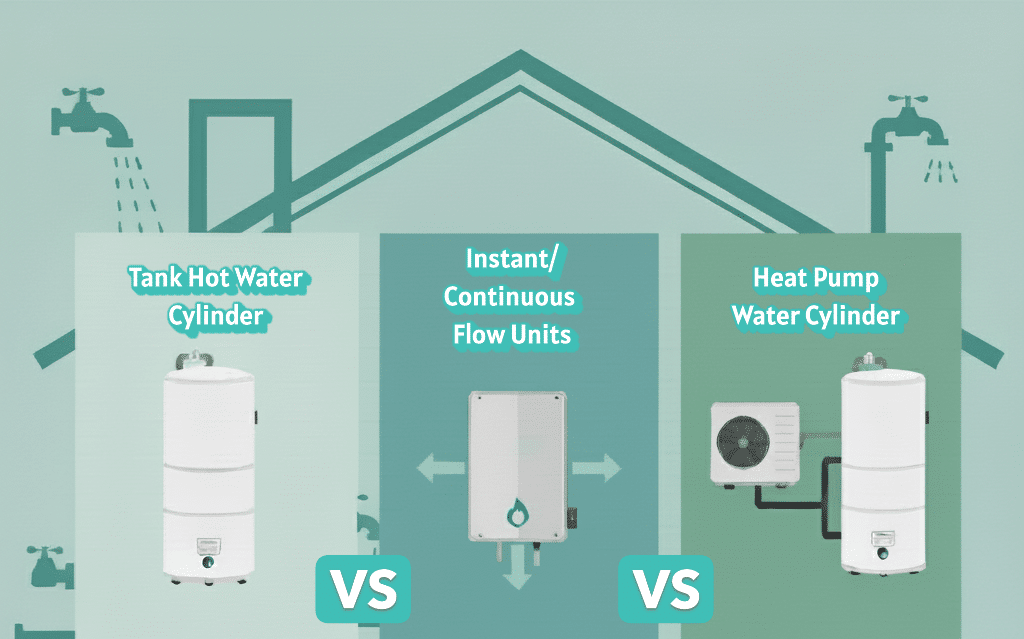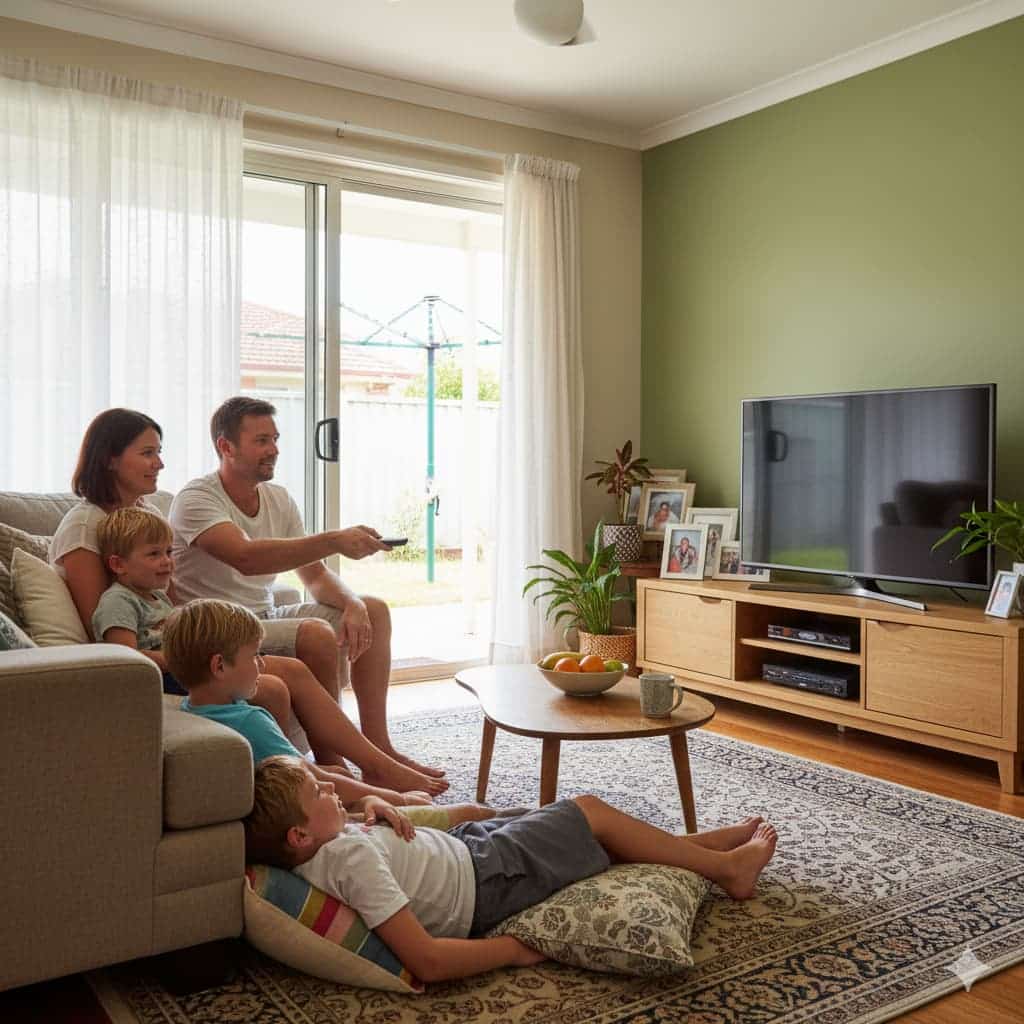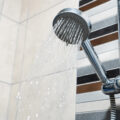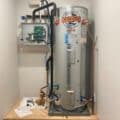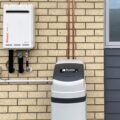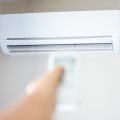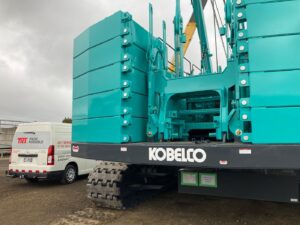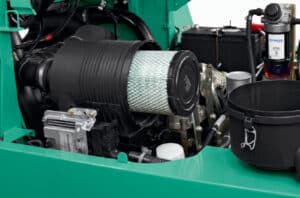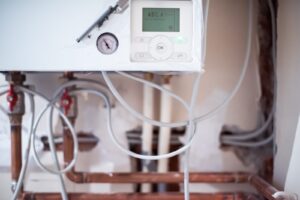If you’ve ever had to suffer through a cold shower on a frosty Kiwi morning, you know just how much your hot water system matters. For New Zealand households, choosing the right hot water solution isn’t just about comfort, instead it’s more about cost, efficiency, and long-term sustainability. With power prices climbing and a strong focus on reducing emissions, more homeowners are asking: What’s the best hot water system for me?
In Aotearoa, three main types of systems dominate the market: traditional tank cylinders, instant (continuous flow) systems, and the newer heat pump water heaters. Each comes with its own advantages and drawbacks, and the right choice often depends on your household size, location, and budget. Let’s break them down.
The Basics: What Each System Is & How It Works
Tank / Storage Cylinders
This is the traditional approach most Kiwis know. Water gets heated by electric elements (or sometimes gas) and stored in an insulated tank, ready for whenever you need it. Turn on the hot tap, and hot water flows straight out because it’s already sitting there at temperature.
Common types in New Zealand include:
- Electric cylinders: Standard heating elements powered by your home’s electricity
- Mains-pressure systems: Connected directly to mains water supply for good pressure
- Low-pressure systems: Older style, often gravity-fed from a header tank
- Gas cylinder combos: Less common but available, using LPG or natural gas
The key thing to understand about storage cylinders is standby heat loss. Even with good insulation, a tank full of hot water gradually loses heat to the surrounding air. Your cylinder has to reheat that water periodically to maintain temperature, which uses energy even when you’re not using any hot water. Better insulation reduces this loss, but it never disappears completely.
Instant / On-Demand (Tankless / Continuous Flow)
Instant systems flip the concept entirely. Instead of storing hot water, they heat it the moment you turn on the tap. Water flows through a heat exchanger (powered by gas or electricity) that rapidly heats it to the temperature you’ve set, then delivers it straight to your tap or shower.
The big advantage is no standby heat loss. If you’re not using hot water, the system isn’t using energy. Theoretically, you’ve got endless hot water because there’s no tank to empty. You could shower for an hour and still have hot water available.
The limitation is flow rate. An instant system can only heat so much water per minute. If you’re running two showers simultaneously, plus the dishwasher, you might exceed what the unit can handle. The water temperature will drop, or the flow will reduce. This is particularly relevant for larger families or homes where multiple people need hot water at the same time.
Heat Pump Hot Water Systems
The new kid on the block, heat pump water heaters use the same technology as a heat pump in reverse — they draw heat from the air and use it to heat your water. They’re far more efficient than straight electric cylinders, using up to 60–75% less energy.
A compressor and refrigerant cycle pulls warmth from outside air (even when it feels cold to you) and concentrates that heat into the water in your cylinder. It takes electrical energy to run the compressor and fan, but you get significantly more heat energy out than the electricity you put in.
This is measured as the Coefficient of Performance (COP), typically between 3 and 4 for good systems. That means for every 1 kW of electricity used, you get 3-4 kW of heating.
Heat pump systems come in two main configurations:
- Integrated units: Compressor, fan, and tank all in one unit
- Split systems: Outdoor compressor unit connected to an indoor cylinder
Both work the same way, but split systems offer more installation flexibility and can be quieter inside the home.
NZ-Specific Pros & Cons: Tank vs Instant vs Heat Pump
Now let’s get into how these systems actually perform in New Zealand conditions, and what matters for Kiwi households.
Energy Efficiency & Running Costs
Heat pumps are the clear winners for efficiency. They can use up to 60-75% less electricity than traditional electric resistance cylinders. Over a year, that’s a serious difference on your power bill. The exact savings depend on your usage, electricity rates, and the specific models, but heat pumps consistently come out ahead for running costs once they’re installed.
Instant systems avoid standby loss entirely, which is a genuine advantage. You’re only heating water when you actually need it. However, if your household frequently uses hot water (which most do), the efficiency gains over a well-insulated tank might not be as dramatic as you’d expect. And if everyone’s showering at once, instant systems work harder and use more energy to maintain temperature across multiple outlets.
Storage tanks are the simplest technology but also the least efficient. Heat loss from the tank means you’re constantly topping up the temperature. Old cylinders with poor insulation are particularly wasteful. If your cylinder is more than 10-15 years old, it’s probably costing you more than you realise.
Here’s something important for New Zealand: our electricity grid is mostly renewable (hydro, wind, geothermal). That means electric systems, especially efficient ones like heat pumps, have a much lower carbon footprint here than in countries burning coal or gas for electricity. Choosing an efficient electric system in NZ is genuinely climate-friendly.
Climate, Location & Performance
New Zealand’s climate varies dramatically from north to south, and that affects how these systems perform.
Heat pumps are brilliant in Auckland or Wellington’s mild climate, but they work less efficiently in very cold air. Down in Otago or Southland during winter, when air temperatures drop near or below freezing, the heat pump has to work harder to extract warmth. Efficiency drops, and in extreme cold, some units struggle. Modern heat pumps are better at handling cold than older models, but it’s still a consideration if you’re in a consistently cold region.
Instant systems can also struggle when inlet water temperatures are very cold. If your mains water is coming in at 8-10°C in winter (common in southern NZ), the instant heater has to work much harder to get it up to 60°C. You might notice reduced flow rates or need a higher-powered unit. Some homes need booster systems in very cold climates.
Tank systems are more forgiving with cold inlet temperatures because they heat water gradually and store it. However, cold ambient temperatures around the cylinder (if it’s in an unheated garage or outdoor cupboard) increase standby heat loss. Good insulation helps, but cold locations make tanks work harder too.
Upfront Costs & Incentives
Let’s talk money. Heat pump systems are significantly more expensive to buy and install than basic electric tanks or instant units. You’re looking at $3,000-$5,000+ for a decent heat pump setup, compared to $1,200-$2,000 for a standard electric cylinder or instant unit. That’s a big gap.
However, the running cost savings add up over time. Depending on your household’s hot water usage, a heat pump can pay back its extra cost in 5-8 years through lower power bills. After that, you’re ahead.
Keep an eye out for incentives. Depending on your region and timing, there might be council rebates, EECA (Energy Efficiency and Conservation Authority) programmes, or retailer incentives that reduce the upfront cost of efficient systems. These change over time, so it’s worth checking what’s currently available before you buy.
Retrofitting also affects cost. If you’re replacing an old cylinder, installation is usually straightforward. But if you’re switching system types (say, from instant to heat pump), you might need plumbing changes, electrical upgrades, or structural work to accommodate the new unit. Get proper quotes that include all the installation work, not just the unit cost.
Capacity & Demand Matching
Getting the size right matters enormously, and it’s different for each system type.
Tank cylinders need to be sized to match your peak demand. Common sizes in NZ are 135 L for small households or units, 180-250 L for average families, and 300 L+ for larger homes or high usage. Run out of hot water and you’re waiting hours for the tank to reheat. Oversize the tank and you’re heating more water than you need, wasting energy.
Instant systems are sized by flow rate, measured in litres per minute at a given temperature rise. You need to calculate maximum simultaneous demand. One shower plus a tap? Two showers? Dishwasher running while someone’s bathing? Make sure the instant heater can deliver enough flow for your worst-case scenario, or someone’s getting a cold shower.
Heat pump systems typically come with a tank, so you get the buffering benefit of storage plus the efficiency of the heat pump. The tank smooths out peak demand, and the heat pump gradually replenishes it. This combination often works well for families with varying usage patterns throughout the day.
Product Examples Available in NZ
Rheem Mains Pressure Cylinders
- Rheem 135L Mains Pressure Cylinder – compact, ideal for smaller households.
- Rheem 300L Mains Pressure Cylinder – suits larger families who need hot water on tap all day.
Rinnai Enamel Mains Pressure Cylinder
- A popular mid-sized storage option, offering durability and efficiency.
Rinnai Infinity Gas Continuous Flow
- One of NZ’s most common instant systems, runs on natural gas or LPG. Loved for endless hot water, though reliant on gas supply.
Heat Pump Hot Water Options
- Rheem Heat Pump Water Heater and Econergy Heat Pumps (NZ-designed and made) are leading the market. Econergy, in particular, is tailored to NZ’s variable climate and has won EECA awards for energy efficiency.
Note on heat pumps and instant systems: Many NZ suppliers stock heat pump water heaters and continuous flow gas or electric units, but these often aren’t listed simply as “cylinders.” Look for them under “heat pump water heaters” or “instant water heaters” at specialist plumbing and HVAC suppliers. Brands like Rheem, Rinnai, Stiebel Eltron, and others all offer options in the NZ market.
Sizing, Installation & Practical Considerations
Getting your new system installed properly makes a huge difference to how well it works and how long it lasts.
Sizing Your System
Start by estimating your household’s hot water usage:
- Showers: Typically 8-10 litres per minute for 5-10 minutes each
- Baths: 80-100 litres to fill
- Dishwasher: 10-20 litres per cycle
- Washing machine: Variable, but modern front-loaders use less
Add up your peak usage (the busiest time of day, usually mornings). For tanks, you want enough capacity to handle that peak without running dry. For instant systems, make sure the flow rate can handle simultaneous demands. For heat pumps, size the tank buffer appropriately and ensure the heat pump can recover quickly enough for your usage pattern.
Installation Practicalities
Space requirements vary dramatically. Tanks need floor space and vertical clearance, especially taller 300 L units. Instant units are compact and can mount on walls, but gas versions need proper venting and ducting to outside. Heat pumps need outdoor space for airflow around the unit, or room for an outdoor compressor if it’s a split system.
Plumbing layout affects efficiency. Long pipe runs from the cylinder to taps mean water sitting in pipes cools down between uses, wasting the heat. Mains pressure is important too, particularly for instant systems that need good flow to work properly.
Electrical requirements for heat pumps include 240 V supply and sufficient current capacity. Older homes might need circuit upgrades to handle the load. Get a qualified electrician to assess your setup before committing to a heat pump purchase.
Retrofitting questions to ask: Can your existing pipes and supports handle a different type of system? Is there adequate ventilation if you’re switching to gas? Will a heat pump fit where your old cylinder was, or do you need to relocate it?
Maintenance & Longevity
Different systems need different upkeep to keep them running well:
Tank cylinders need periodic maintenance including:
- Anode replacement (sacrificial anode rods protect the tank from corrosion)
- Flushing to remove sediment build-up that reduces efficiency
- Checking pressure relief valves
- Inspecting insulation wrap if external
Instant systems require:
- Regular descaling if you have hard water (calcium build-up reduces efficiency)
- Cleaning or replacing filters
- Checking gas connections and burners (for gas units)
Heat pump systems need:
- Fan and coil cleaning to maintain airflow
- Refrigerant level checks by qualified technicians
- Ensuring outdoor units aren’t blocked by plants or debris
- Checking condensate drainage
All systems benefit from annual professional inspections, but heat pumps particularly need this because the refrigerant cycle requires specialist knowledge to maintain properly.
Decision Guide: Which Type Fits Your Home?
Let’s break down which system makes sense for different situations.
| Household Type | Best Option | Why It Works | Things to Consider |
| Small or Low-Use Homes (1–2 people, units, holiday homes) | Instant (tankless/continuous flow) | – Low standby loss – Compact size – No wasted energy when water isn’t in use | – Flow rate must handle occasional simultaneous showers/taps – May struggle in very cold climates |
| Small or Low-Use Homes (Alternative) | Small Tank Cylinder (135–180L) | – Simple, reliable – Cheaper upfront – Familiar technology | – Higher running costs over time – Heat pumps generally not cost-effective at low usage |
| Average Family Homes (3–4 people) | Heat Pump + Tank Combo | – Excellent efficiency saves money long-term – Buffer capacity handles morning/evening rushes | – Higher upfront cost – Needs proper installation and space |
| Average Family Homes (Budget Option) | Large Well-Insulated Tank (180–250L) | – Lower upfront cost – Familiar, widely available option | – Higher running costs over lifetime – Insulation quality makes a big difference |
| Average Family Homes (Not Recommended) | Single Instant System | – Compact, saves space | – Struggles with multiple simultaneous demands (two showers + dishwasher etc.) |
| High-Demand or Large Homes (5+ people, multiple bathrooms) | Heat Pump with Large Buffer Tank (300L+) | – Efficiency plus capacity for peak demand – Well-suited to heavy simultaneous use | – Must be properly sized – Needs professional installation |
| High-Demand or Large Homes (Alternative) | Large Storage Tanks (300L+) or Multiple Cylinders | – Massive buffer capacity for families with big daily demand | – High running costs over time – Consider long-term energy bills |
| High-Demand or Large Homes (Premium Option) | Hybrid System (Solar Pre-Heat + Tank or Heat Pump) | – Maximises efficiency by using free solar energy when available – Great long-term savings | – Highest upfront cost – Best value for high users planning to stay long-term |
Conclusion & Takeaways
There’s no universal “best” hot water system for every Kiwi home. It genuinely depends on your household size, usage patterns, climate zone, installation constraints, and budget.
Tank cylinders are simple, familiar, and cheap upfront, but less efficient and more expensive to run long-term. They work reliably in all climates but waste energy through standby losses.
Instant systems eliminate standby loss and save space, but can struggle with simultaneous demand and cold inlet temperatures. They’re great for small households or specific situations but might frustrate larger families.
Heat pumps are the most efficient option for most New Zealand homes, cutting running costs dramatically. They cost more upfront and need proper installation, but the long-term savings and lower environmental impact make them increasingly popular.
Take the time to properly assess your hot water demand. Look at your household’s usage patterns honestly. Get quotes from reputable installers for the systems you’re considering, including all installation costs. Calculate the long-term running costs, not just the upfront price tag. A system that costs more to buy but saves you hundreds of dollars a year on power will be cheaper over its 10-15 year lifespan.
Your hot water system is one of the bigger energy users in your home. Choosing wisely means lower bills, better performance, and doing your bit for New Zealand’s clean energy future.

